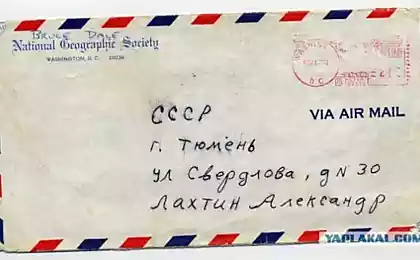733
38 facts about the Roma

1. «Gypsies" - a collective term, such as "Slavs", "Caucasians", "Scandinavia" or "Hispanic." Roma are several dozen nationalities.
2. We have the Roma national anthem, flag and artistic culture, in Vol. h. Literature.
3. The Roma are divided into Eastern and Western.
4. The Roma as a nation formed in Persia (eastern branch), and the Roman Empire (aka Romeo, she Byzantium, the western branch). Generally, usually referring to the Roma, have in mind the Western Gypsies (Roma groups and feces).
5. As Roma Roma groups - Caucasians and emerged as a nation in a European country, they are Europeans, and not a "mysterious oriental people," as journalists like to write. Of course, as in Russian and Spanish, they have left a legacy of eastern mentality.
6. «Eastern» Roma gypsies became known only in the 19-20 centuries, when Europeans who visited Asia, drew attention to their resemblance to the Roma, as well as some general crafts and traditions. "Oriental" Gypsies have a culture very different from the "obschetsyganskoy" (t. E. Culture noticeably more numerous and cultural development "Western" Roma), although those and those have a common cultural heritage of Indian ancestry. "Eastern" and "Western" Roma hardly communicate.
7. of the Romani language in the vast majority are descendants of Sanskrit. Ethnically, the Roma are descendants of the Aryans, with Dravidian admixture (Dravidians - the indigenous people of India, conquered by the Aryans, who owned one of the oldest written culture at the time of the conquest was more developed than the culture of the nomadic Aryans).
8. Contrary to the claims of some people far from the ethnography and history, no "expulsion of Roma" from India and the Roman Empire was never as events.
In India, the Roma did not exist, were Indians. According to the latest genetic and linguistic studies, the ancestors of the Roma, a group of Hindu caste "house" of about 1,000 people, left India somewhere in the VI century. It is expected that this group of musicians and jewelers Indian ruler presented the Persian, as was the custom of the time. Already in Persia size of the group has grown strongly, there was a social division within it (mainly by occupation); pratsygan part in the IX-X centuries, gradually began to move to the west, and finally came to Byzantium and Palestine (two different branches). Some remained in Persia and is spreading out to the east. Part of the Roma, in the end, came to the homeland of their ancestors - India.
9. Byzantium Gypsies left in the period of the conquest of its Muslims, hoping to get help from fellow-Christians (people were naive and times). The outcome of the Roman Empire lasted for decades. Part of the Roma, yet, for various reasons, remained at home. Their descendants in time converted to Islam.
10. There is a hypothesis that the nickname of "the Egyptians," Roma got back in the Byzantine Empire, for his tan and that the most significant part of the Roma is ranked as the Egyptians and visitors, circus arts. With the circus art and connected with divination was another nickname, which was the word "Gypsy": "atsingane." Initially, they called some sects seeking secret knowledge. But over time, apparently, it is a household word, ironic for all those involved in the esoteric, magic tricks, fortune-telling and oracles. Roma themselves have then called "Roma" and gave themselves the nickname of "feces", ie. E. Dark-haired, dark-skinned
11. It is believed that Roma are widespread in Muslim countries belly dancing. However, that no evidence of any denials.
12. The traditional Gypsy areas of activity are the arts, commerce, crafts and horse breeding (from the prosaic production of bricks and weaving baskets to romantic jewelry art and embroidery).
13. Soon after the arrival of Roma in Europe were among the victims of larger social and economic crises and underwent the most severe persecution. This led to a strong marginalization and criminalization of Roma. From the complete destruction of the Roma rescued generally neutral or friendly attitude of most of the common people, who did not want to perform against Roma bloody laws.
14. It is said that the famous Papus learned to guess the Roma.
15. The Inquisition was never interested in Roma.
16. Medicine no known cases of leprosy among the Roma. The most common blood group Gypsies - III and I. The percentage of III and IV of the blood is very high compared to other European nations.
17. In the Middle Ages the Roma, as well as the Jews were accused of cannibalism.
18. in the 18-19 centuries, with increased tolerance to them in European society, the Roma criminality sharply and strongly decreased. In the 19th century in Europe has gone very fast integration of Roma into society.
19. The Russian Gypsies came more than 300 years ago. Like other nations now entrenched (eg, Kalmyks) they received permission to reside in Imperial Russia and engage in traditional crafts (trade, breeding, fortune-telling, singing and dancing). After a while the Roma began to call themselves Russian Roma are still the most numerous of the Roma in Russia. By 1917, the Russian Roma were the most integrated and educated Roma Russia.
20. At various times in Russia and immigrated Kelderari (Kelderari), Lovari, Servitka Roma, ursari, Vlachs and other Roma.
21. Almost all the names of Roma are either names of key professions, or display name of the country, which is considered their home. It says a lot about Roma priorities.
22. The famous gypsy national costume was coined in the 19th century. His first began to wear Kelderari. National costume was coined by Russian Roma artists to create more exotic scenic image. Historically, the Roma have always been inclined to wear clothes typical of their country of residence.
23. The Gypsies - known pacifists. However, at different times they served in the armies and the armies of Germany, Prussia, Russia and Sweden.
In 1812, the Russian Roma voluntarily transferred the maintenance of large amounts of the Russian army. Young gypsy guys fought in the Russian army.
At the same time, that's funny, in Napoleon's troops fought a lot of French Gypsies. There is even a description of the meeting during a battle between the Spanish and the French gypsy with two different sides.
During World War II the Roma participated in hostilities as part of both regular armies (the Soviet Union, France, ordinary, tankers, military engineers, pilots, medics, gunners, and so on. P.) And the guerrilla groups, mixed and pure Gypsy (USSR France, Eastern Europe). Guerrilla action against the fascists Gypsies sometimes called "Aria against Aryans».
24. As a result of the systematic extermination of gypsies directed by the Nazis in Europe, died about 150, 000 (for comparison, in the USSR lived 60 000, according to the census, 000 to 120, on the assumptions) Roma. "Gypsy Holocaust" called Cali Thrush (there are also options Samudaripen and Paraimos).
25. Among the prominent Roma have scientists, writers, poets, composers, musicians, singers, dancers, actors, directors, boxers (in Vol. h. Champions), football players, historians, politicians, priests, missionaries , painters and sculptors.
Some are known more, such as Mariska Veres, Ion Voicu, Janos Bihari, Jem Mace, Mateo Maksimov, Yul Brynner, Tony Gatlif, Bob Hoskins, Nicholas Slichenko, Django Reinhardt, Biréli Lagrène than others, but can also boast a significant contribution to Gypsy culture.
26. After seeing an article on Russian Gypsies phrase "nomadic people" without the quotes, it can not read. The author does not write anything really significant, if not even know such a fact that only 1% of the Russian Gypsies roam.
27. According to data of the Interior Ministry, despite the fact that in the media mentions in articles gypsy criminal fraud in the first place, the statistics they last. Ethnographers believe that a similar situation with Roma fraud and drug trafficking in Russia.
28. In the time of Stalin's repression targeted Gypsies were subjected to.
29. The term "Gypsy Baron" gypsies used only the last couple of decades and not all of them. This borrowing from the media and romantic literature. The term is used specifically to communicate with the non-Roma.
30. In the world there are a few notable Roma theaters in Russia, Ukraine, Slovakia, Germany, as well as theaters and studios are smaller in these and other countries.
31. One of the most interesting concepts Roma - is the concept of "an abomination." It is connected with the lower part of the body or just a married adult woman. Suffice it on something go like this place becomes "defiled." Clothing worn on a woman from the waist down, and footwear are automatically considered "defiled." Therefore, in the national costume for women, many Gypsies world enters a large apron. And for the same reason, not to be defiled, Roma prefer to live in small, single-storey houses.
32. Short hair Gypsies - a symbol of dishonor. Hair shave exiled and isolated. Until now, Roma avoid very short haircuts.
33. Many Gypsies understand simple phrases, uttered in Hindi. Therefore, Gypsies are so fond of some Indian films.
34. Do Roma have "undesirable" profession, which is usually hidden, so as not to "fall out" of the Roma community. This, for example, factory work, street cleaning and journalism.
35. Like every nation, the Roma have their national dishes. Since ancient times, the Gypsies have lived in the forest or near the so fed caught hunting animals - hares, wild boars and other. Particular national dish Roma - urchin, grilled or stewed.
36. Media Roma gene called Romano Rat. During the Roman rat recognizes the right, if they want to become gypsies. Romano Rath are guitarist «Rolling Stones» Ronnie Wood, Sergey Kuryokhin, Yuri Lyubimov, Charlie Chaplin and Anna Netrebko.
37. The word "lave" in Russian slang borrowed from the Romany language, which is a form of "love" (gypsies not "akayut") and the meaning of "money».
38. earring in one ear gypsy means that he is the only son in the family.
Sources: romanykultury.livejournal.com and ibigdan.livejournal.com
via factroom.ru























